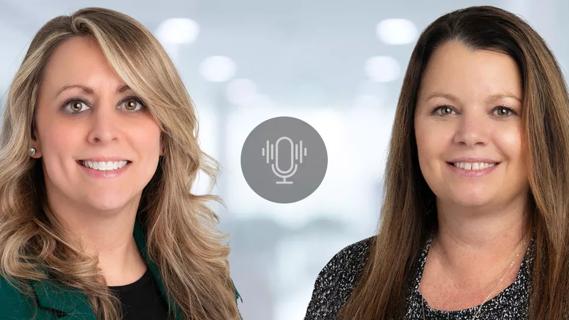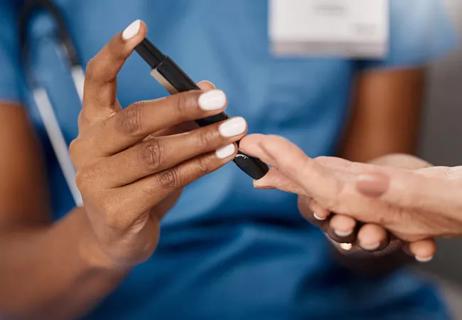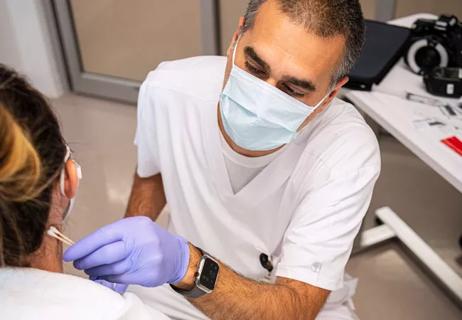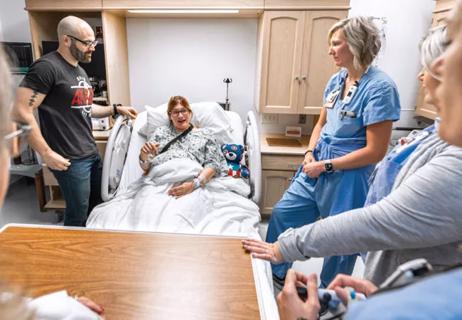M-Power tailors practices for those who have experienced sexual assault and violence

Trauma-informed medical care has gained traction in recent decades, but opportunity still exists for improvement in certain areas, including perinatal care for survivors of childhood sexual assault and violence. Now Cleveland Clinic is closing that gap with M-Power, an education and perinatal care program tailored to the needs of this patient population.
Cleveland Clinic is a non-profit academic medical center. Advertising on our site helps support our mission. We do not endorse non-Cleveland Clinic products or services. Policy
Between 20% and 33% of women have experienced some form of sexual abuse, according to Dusty Burke, MSN, RN, C-EFM, Director of Nursing Operations. She works with nursing colleague Patricia Gilbert, BSN, RN, Suchetha Kshettry, MD, and other providers in the Ob/Gyn & Women’s Health Institute.
With more than 16,000 births taking place at Cleveland Clinic hospitals each year, the team sees substantial potential for improving the perinatal experience for those who have survived abuse. M-Power program services are available to anyone who has suffered sexual assault or violence, or who has had a previous traumatic birth experience.
The program is based on principles shared in When Survivors Give Birth, a 2004 book by physical therapist Penny Simkin and social worker Phyllis Klaus, which spawned an educational training program for caregivers. Gilbert, who works as an obstetrics nurse at Cleveland Clinic Fairview Hospital, had been briefly introduced to the concepts at a previous job out of state.
“It was such an ‘aha’ moment for me,” Gilbert says. “I had seven or eight years of labor and delivery experience at that point, and I could suddenly recall images of patients I had had over the years. It was just very impactful, and it changed the way I approach my patients. The first time I have the slightest concern, I say, ‘let’s talk about it.’ But it’s nice to have that conversation beforehand, rather than when the patient has already had the epidural and is in labor.”
When Gilbert raised the question to her team at Fairview Hospital, it didn’t take to discover that nothing like it existed at Cleveland Clinic.
And it was needed.
“The ability for the M-Power program to support a patient’s psychosocial and physical needs is endless,” says Dr. Kshettry. “Through this program, we aim to empower our patients to create a care plan that will help their experience in labor and delivery. We want to decrease anxiety associated with the labor process. We want to support our patients through all facets of pregnancy/postpartum.”
For those who have survived childhood sexual assault, childbirth presents a host of experiences that have the potential to reignite trauma based on previous experiences during which they lacked control. Where pregnancy and the anticipation of childbirth typically brings excitement, it can stir up fear and dread for others, as Simkin and Klaus explain in the introduction to their book.
“Because she has learned that touch is a violation, the incest survivor should never be touched without her permission,” write Simkin and Klaus. “Because she was robbed of choice, service providers should be careful to involve her in all decisions that affect her. Because incest is the ultimate disrespect, caregivers should always take the time to treat her with carefully considered respect.”
Burke and Gilbert applied for a Cleveland Clinic Caregiver Catalyst Grant to fund the education portion of the program. A certified trainer from When Survivors Give Birth presented a two-day workshop available to any perinatal caregiver at Cleveland Clinic. Gilbert also is building an online educational module that can be opened up to caregivers each year.
The program itself brings patients together with trained nurses who walk them through the birthing process and build a plan of care that foregrounds their needs. Other components of the project included a digital environment for program information in Epic (Cleveland Clinic’s medical health records system), marketing materials, and establishment of workflows that follow the patient from intake through the postpartum experience.
Participants are Cleveland Clinic perinatal patients who either have identified themselves as trauma survivors or who are identified by a nurse or provider. Referred patients initially meet with Gilbert, who performs a brief intake and connects them to a resource nurse at the hospital where the delivery is planned. The resource nurse schedules four hours to meet with the patient, perform an in-depth intake and walk them through the hospital spaces, from the point of arrival through delivery, NICU and any other relevant areas.
“They talk about everything from health processes to what they will wear in labor,” Gilbert says. “Some of these things may sound small, but to someone who has experienced these issues, something like wearing their own clothes can be a comfort.
“We want them to be prepared for what the lighting will be like, and understand what to expect if they were to have a C-section,” she adds. “We talk through IVs, being exposed, things like that, both so they know what to expect and so we know how we can help support them. We can be more conscious of who’s in the room, keep them draped a little bit more so they feel covered and safe. We talk through all of that and make a care plan that goes into their note, so that when they come in for delivery, the team can do what the patient desires. The conversation has already been had.”
Not all patients require the same approach, Gilbert points out. She has had experiences with patients who feel anxious if their newborn is presented immediately to them after birth.
“We typically take these newborn babies and deliver them right up to the mom,” Gilbert says. “We think of skin-to-skin as perfect, but it’s not perfect for everybody. To someone with a history of assault or abuse, body fluids can be triggering. So for them, if you put this wet, slimy baby up on the chest, it’s not such a bonding moment.”
A small adjustment, such as drying the baby off first, can make all the difference for some people. And for others, she adds, there’s no problem to begin with.
Breastfeeding also can present challenges for some patients. “It’s important that we be understanding and respectful of what’s best,” Gilbert says. “If we have a conversation beforehand, you can talk through their options. How would they feel about pumping and giving the breast milk through a bottle rather than having the baby attached to them? It’s important to let them think through that process.”
The success of M-Power initially is being measured by numbers of patient visits as well as patient feedback, says Burke. Factors include patient-reported responses on:
“We have no doubt that we will see an increase in referrals to the program over time,” Burke says. “We have garnered a lot of interest among our caregivers. They understand and appreciate the importance of this program to patient experience, both short- and long-term. We want everyone to feel empowered during the process and create an opportunity for mom, baby and family to bond from the beginning.”
The program also benefits caregivers by providing insights they may have been missing.
“This program allows our teams to identify and more appropriately support obstetric patients who have been impacted by trauma in their lives,” says Dr. Kshettry. “Currently, caregivers may feel ill equipped to address the specific needs of this patient population. This program is designed to bridge that gap.”


Nurses play pivotal role in patients’ ability to recover in the comfort of their own homes

Advocating for patient safety is imperative in fast-paced surgical settings

Advice for those pursuing a WOC nursing career

Redesigned protocols enhance infection-prevention measures

Longevity in healthcare, personal experiences may provide caregivers with false sense of confidence

Specialized team prioritizes trauma-informed care and evidence collection

Collaborative approach leans on expertise of nurses

TeamBirth aims to improve outcomes by facilitating collaboration between patients and caregivers